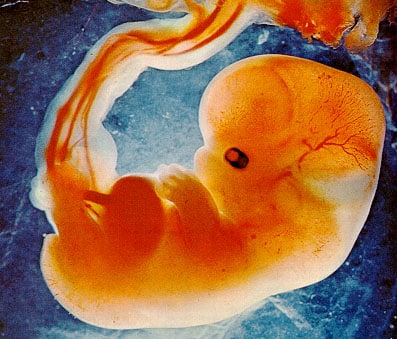In a very bold step forward, parliament has voted 328 to 128 in favor of making changes to the law that will allow three-person embryos through a technique called mitochondrial DNA transfer. Next month, if the House of Lords supports the change (which it is expected to), the UK will be the very first country to permit the making of embryos with genetic materials from three people: a man and two women.
Mitochondria are like small powerhouses inside the body’s cells that can convert food into energy for the cell to function. Faulty mitochondrial DNA can affect tissues that have high energy demands, such as the heart, brain, muscles, liver, and kidneys. The end result can include loss of movement control, diabetes, epilepsy, heart problems, liver failure, muscle wasting, stroke-like episodes, and even death.
Passed from the mother, mitochondria have their own DNA, and it is possible to replace faulty mitochondria with healthy mitochondria from a donor without altering what a person’s physical appearance or personality will be like. And this is exactly what three-parent embryos do: they remove the faulty mitochondria DNA of the mother and then replace it with healthy donor mitochondria DNA.
The goal is to eliminate the transfer of serious genetic diseases like muscular dystrophy through the use of in vitro fertilization. It is done through two different methods. In the first, the nuclear DNA is removed from the egg of the mother, inserted into the nuclear DNA-stripped egg of a female donor, and then fertilized by the father’s sperm. In the other, the egg is first fertilized and then the nuclear DNA is removed and inserted into the egg of a female donor that has been stripped of mitochondrial DNA. The results of each method are the same: an embryo with nuclear DNA from the mother and father and the healthy mitochondrial DNA from the female donor which enables a child to be born free of mitochondrial DNA disease.
Around 2,500 women could benefit from a mitochondrial donation in the United Kingdom, a leading medical journal recently found. And estimates say the use of the technology could result in the birth of about 150 healthy babies each year. Unfortunately, there are some groups not very fond of the technique. Their biggest fear is that it will open the door to other types of genetic manipulation. Others say that the procedure isn’t safe and that, in animal studies, faulty DNA was still transferred; the result could be an increase in the risk of cancer.
But the MPs who are supporting the change say that the benefits still outweigh the risks, and, as far as mitochondrial diseases go, the new procedure could be the “light at the end of a dark tunnel” for families.
“There are currently no means to treat devastating mitochondrial disease, which can cause muscle wastage, loss of vision, stroke-like episodes, and a premature death,” Robert Meadowcroft, chief executive of the Muscular Dystrophy Campaign, told Medical News Today. “Preventing inheritance, where possible, remains our only option, and that is why we have invested in a wholly support this pioneering technique.”
Related Articles:
- Study: Baby’s Genes May be Responsible for Triggering of Some Preemie Births
- Study: Paying Women to Stop Smoking during Pregnancy More Effective than Other Methods
- Study: Siblings with Autism may Have Different Forms of the Disorder







